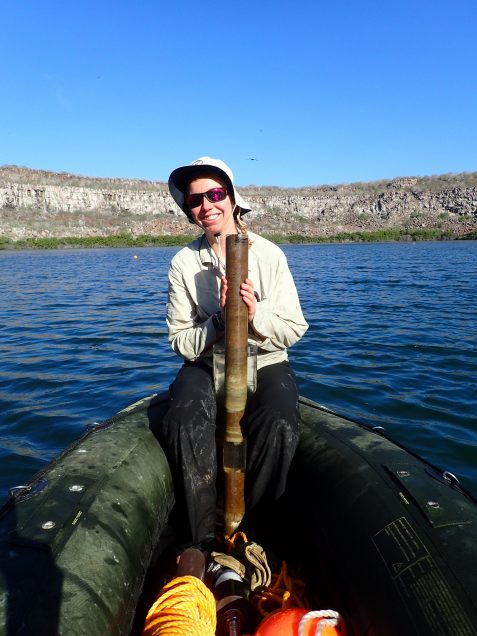Galapagos Lakes
The sediment records from Genovesa and Bainbridge Crater Lakes, Galapagos have provided long records of past changes in tropical Pacific climate variability, particularly variability associated with the El Niño-Southern Oscillation (ENSO). However, existing hypotheses for the impact of climate variability on sedimentation in these lakes had never been tested. Capitalizing on the predicted El Niño event in 2009, we deployed weather stations and in-lake sondes, as well as simple sediment traps, to test existing hypotheses for sedimentation in these lakes. This work has produced nearly continuous daily data for the climate and limnology of these crater lakes from December 2009 to present, a period that covers more than 7 full seasonal cycles and includes weak, moderate and strong El Niño events and sustained La Niña conditions. Our results to date have prompted a re-thinking of published interpretations of these lake-based climate reconstructions.
Despite the importance of local climate change to the mission of the Charles Darwin Research Station and Galápagos National Park to conserve the unique environment and biodiversity of the archipelago, there is still considerable uncertainty in the sign of the change and its impact on ENSO variability. The long-term monitoring dataset provided by this study has extended data available for making such management decisions. Further, this work will improve reconstructions of the strength and frequency of ENSO events in the past, which will help constrain the range of variability observed in this region.
Galapagos Research Photo Gallery
Team
- Dr. Mark Bush, Florida Institute of Technology
- Dr. Anthony Chappaz, Central Michigan University
- Dr. Julia Cole, University of Arizona
- Dr. Aaron Collins, Florida Institute of Technology
- Dr. Jessica Conroy, University of Illinois at Urbana-Champaign
- Stephan Hlohowskyj, Graduate Student, Central Michigan University
- Dr. Andy Kurtz, Boston University
- Dr. Jonathan Overpeck, University of Arizona
- Dr. Megan Rohrssen, Central Michigan University

